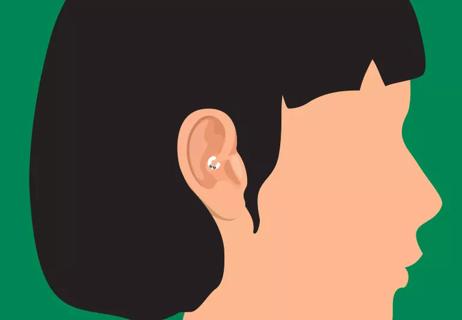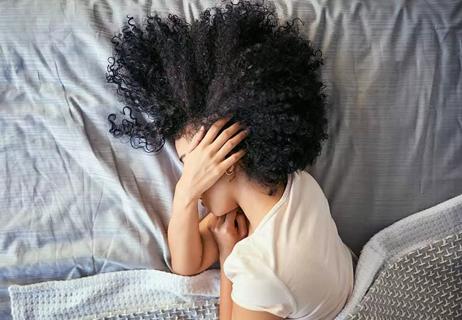If you’re experiencing the worst headache of your life, it may be time for a trip to the hospital

Migraines can sometimes make you feel like you have nowhere to turn. Especially if you live with chronic migraines, you know that often when the pain starts, it can stop your day in its tracks.
Advertisement
Cleveland Clinic is a non-profit academic medical center. Advertising on our site helps support our mission. We do not endorse non-Cleveland Clinic products or services. Policy
Worse than your traditional headache, migraines can include moderate to severe head pain that causes throbbing or pounding. You may also experience other symptoms like nausea, vomiting, fatigue, dizziness and sensitivity to light, noise and certain smells.
According to the American Migraine Foundation, at least 39 million Americans live with the neurological disease and an estimated 148 billion in the world live with it — so if you’re dealing with migraines, you’re definitely not alone.
If you have chronic migraines, you may be experiencing 15 or more migraines per month. And with each migraine lasting four hours to several days, you know how migraine pain can affect your overall quality of life — impacting both your personal and professional routines.
So, it’s completely understandable that when an especially bad migraine hits, you may wonder if you need to go to the emergency room. But how do you know when a migraine is crossing the line from painful to something that a doctor needs to check on right away?
Neurologist Payal Soni, MD, explains when you should go to the ER for a migraine and what to expect when you’re there.
First, it’s important to know that while a migraine can cause severe pain, it can’t kill you. If you feel like you’re able to manage your pain at home, there might not be a need to go to the emergency room.
Advertisement
But this doesn’t mean you should never go to the emergency room for a severe migraine either. In some cases, a severe headache might not be a migraine, but instead a sign of a more serious underlying condition like a stroke, a hemorrhage or an infection. In these cases, particularly bad head pain may be a signal that you need to seek medical attention.
If you live with chronic migraines, you may have already noticed patterns that some of your migraines take, like maybe they hit in the morning or at night. Or maybe, they sometimes come on after certain triggers like food or smells.
You may also have specific accompanying symptoms that occur during your migraines, such as feeling sensitive to light or sound. This is important because knowing what’s a common migraine for you will help you decipher when you’re having a migraine that may be indicating a more serious issue.
In general, you should head to the ER if you experience any of the following during your migraine:
Let’s dive further into the details of how to recognize if your migraine has become more dangerous.
Typically, you should work with your primary care doctor or a migraine specialist to figure out a rescue or preventive plan when it comes to managing your migraines.
But there are some red flags that migraine sufferers should watch out for that warrant immediate emergency care. These include:
Sure, you’ve had head pain before. But there’s a chance you’ll notice if the migraine you’re having is more intense than others you’ve had in the past. Especially if it’s a new pain (say, it feels more stabbing, while you usually experience throbbing) or you’re feeling the pain in a new spot on your head, that can also be a sign that something else is going on. Plus, if the pain doesn’t respond to or continues to worsen after treatment, it’s likely time to head to the hospital.
What’s a thunderclap headache? It’s an intensely painful headache that develops in less than a minute, versus a headache that gradually worsens over several hours. For example, if your migraine pain usually peaks at an 8 and you feel that level of pain immediately (within 60 seconds), you’re probably experiencing a thunderclap headache. You may also experience vomiting, nausea and fainting in addition to pain. A thunderclap headache could be a sign that something’s wrong, so it’s important to get it checked out.
Advertisement
Certain symptoms that accompany a migraine could be pointing to a neurological condition like epilepsy, multiple sclerosis (MS) or fibromyalgia.
You should head to the emergency room immediately if during your migraine you start to feel any of these symptoms:
It’s also important to take migraines seriously if it follows a severe injury or fall. When you get a concussion, it’s common to get a headache. But after a head injury, if you experience another headache within seven days, you could have a post-traumatic headache. This type of headache is typically accompanied by trouble concentrating, mood and personality changes and dizziness.
You should be extra cautious when it comes to migraines if you also have a medical condition like heart disease, liver disease, kidney disease or a history of stroke. Migraines or unusual headaches may point to a life-threatening change in your health.
Migraines can look different for everyone, and they can also feel different when you’re pregnant.For example, some people experience a reduction in their migraine attacks during pregnancy.
Advertisement
But for others, they may experience migraines for the first time or even experience migraines more frequently while they’re pregnant.
A 2019 study shows that people who are pregnant and have migraine attacks may be more likely to experience certain complications, including:
It’s important to talk to your healthcare provider about any migraines you experience, which most likely can be treated at home with medications (it’s important to know what you can and can’t take during your pregnancy).
But if you’ve never had a migraine before, have a headache that won’t go away, have a headache with high blood pressure or have a headache with vision changes, you should head to the ER.
If you head to the ER for migraine treatment, the medical team will run tests to make sure there isn’t a more serious condition. Those tests can include an eye exam, blood or urine tests, a CT scan, MRI or spinal tap.
They’ll ask about your symptoms, medications or supplements you’ve taken recently, and if you’ve used any migraine treatments before to relieve your pain.
Advertisement
You may also receive medication through an IV to help with your pain and any other symptoms. Medications can include nonsteroidal anti-inflammatory drugs (NSAIDs), acetaminophen and corticosteroids.
If you’re living with chronic migraines, you may have already tried a decent amount of medications and pain relievers.If your current medications aren’t bringing relief, you may receive what’s sometimes referred to as a “migraine cocktail” during your ER visit.
A migraine cocktail is a combination of different medications, which are typically given through an IV. Medications that can be included in a migraine cocktail include:
Healthcare providers will usually turn to a migraine cocktail when you aren’t responding to over-the-counter medications or if your migraine is lasting more than 72 hours — this is often called “status migrainosus.”
“Migraine cocktails can help to break up a headache cycle not responding to typical at-home rescue treatment,” Dr. Soni concurs.
In some cases, your healthcare provider may prescribe you a combination of medications to continue to take at home.
Even after a bad migraine attack, you may be tempted to just power through it once the pain subsides. But it’s important to speak to your doctor or a healthcare provider if your migraines have started affecting your day-to-day life, such as disrupting your routines, causing you to miss work or sleep, and so on. Especially if you’ve been to the emergency room due to debilitating migraines before, you should schedule a follow-up appointment with a healthcare provider to help figure out a plan for moving forward.
While migraines can be painful and disrupt your life, you should be able to treat most attacks at home and avoid an ER visit. But it’s important to listen to your body. If the pain is severe and accompanied by new symptoms, then it’s time to head to the emergency room.
Learn more about our editorial process.
Advertisement

Among the options is a fast-acting medication that offers relief in as little as 15 minutes

Start by reevaluating your triggers and lifestyle factors, but also consider trying new medication

A little can help, too much can hurt

They might look cool, but there’s no scientific evidence that daith piercings ward off pain

Getting enough sleep, avoiding dietary triggers and reducing stress can provide relief

Your genes may offer some insight when learning about your migraine symptoms

Migraine length depends on your triggers, health history and whether they are chronic

Dehydration, sleep issues and certain foods can lead to an early morning headache

If you’re feeling short of breath, sleep can be tough — propping yourself up or sleeping on your side may help

If you fear the unknown or find yourself needing reassurance often, you may identify with this attachment style

If you’re looking to boost your gut health, it’s better to get fiber from whole foods